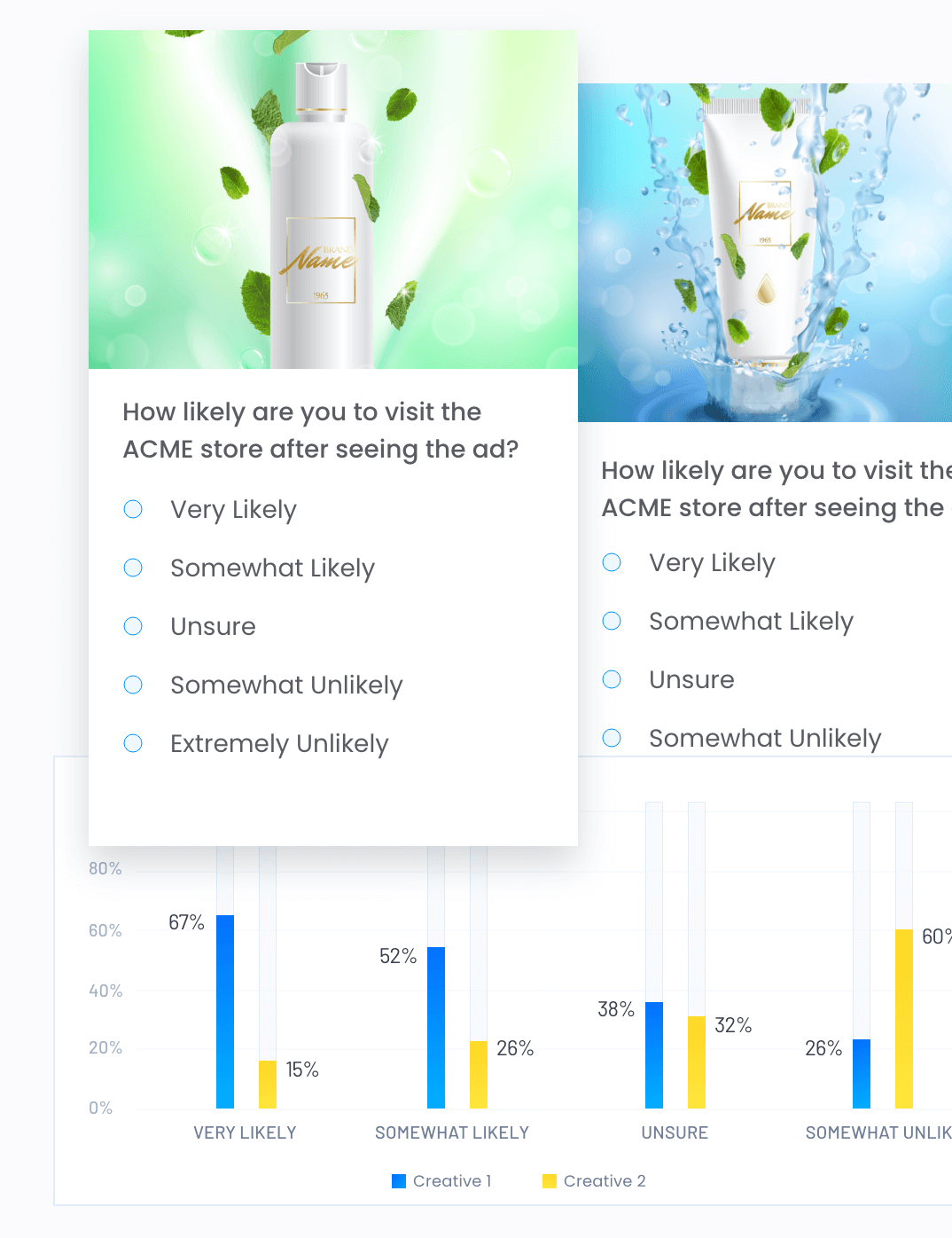- Media Consumption & Trends
- Products & Tools
Amplify Your Campaigns with Mobile Advertising Research

5 Useful Applications of Mobile Advertising Research Surveys
Mobile advertising research surveys and polls can be a great way to enhance your in-app ad campaigns and better understand holistically how your spending is impacting your bottom line.
Here are five great applications of mobile panels and market research surveys that you can use to make your in-app advertising campaigns stronger and more effective.
1) Ad Recall Research
Let’s say you're running a branding and awareness campaign where you’re measuring success on impressions, scale and reach, buying on a CPM (cost per 1,000 impressions) basis. While mobile advertising partners and third-party attribution players can help you determine if the ads were actually seen by the right people, how do you determine if the ads were remembered later on?
This is where ad recall surveys can come in handy. Here, a very short poll is distributed to everyone who saw the original ad (plus some that didn’t, as a control group) to see if they recalled seeing that ad at some point later on (24 hours later, one week later, one month later, etc.). This can help you figure out if your ad creative was actually memorable and unforgettable, or if it was effectively ignored.
2) Footfall Analysis Proofpoints
Many brands will run ads through a variety of channels (think radio, TV, print, etc.) in order to drive someone to make a purchase at a physical location. This can be an especially effective path for in-app advertising campaigns, as mobile creative can include dynamic maps that show viewers precisely where the nearest store is and how they can get there — all within the advertising experience.
For example, McDonald’s took this path to drive people to buy its latest breakfast items in one recent successful in-app ad campaign (telco Orange has done the same thing too). For this kind of advertising, brands and their partners typically leverage footfall attribution solutions, which link together the geographic coordinates (i.e. lat/long signals) of those that saw the ad with information on who actually set foot in a designated brick-and-mortar store.
But while this kind of footfall attribution helps find overlaps in those who both saw a particular ad and those who went to a specific store, but it doesn’t reveal motive. Just because someone was exposed to a particular campaign doesn’t mean that those ads played a role in convincing them to make a specific purchase decision.
To expose this kind of information, media effectiveness surveys are needed. These can be deployed to everyone exposed by the footfall analysis, to help brands determine the real reasons these particular consumers took the actions they did and highlight key motivating factors.
3) A/B Creative Testing and Campaign Concepts Testing
What if you could determine, with a fairly high degree of accuracy, how a campaign and its creatives would perform before spending a single cent with a demand-side platform or ad exchange? This is essentially what concept surveys enable you to do.
Prior to any official campaign launch, you can poll your target audience to see what offers, ad creatives, messages, etc. will most resonate with them. That way, you can spend your ad dollars with confidence, knowing that what’s being used is what your target consumers want to see.

4) Proving Cross-Platform Attribution
As we’ve noted before, people will likely be exposed to your messaging on multiple devices and through multiple channels before they make a purchase decision. As a result, it’s often difficult to determine precisely which touchpoints had undue influence. While someone may have been exposed to multiple ads, it’s not unreasonable to suspect that one or two may have really driven someone over the edge and convinced them.
This is where media effectiveness and consumer insights surveys can prove immensely useful. It’s possible - and often optimal - to track the effectiveness and brand lift for online and offline campaigns using a variety of metrics and insights solutions.
5) Brand Tracking and Social Sentiment Analysis
It can be hugely beneficial for brands to know what prospective and current customers think about them, in order to be sure they’re bringing the right message out to the market in their campaigns. For example, if a restaurant brand is mostly associated with value (i.e. for offering good bang for the buck) then it may not succeed with an ad campaign focused on ingredients or service necessarily.
It’s crucial to understand brand health as well as your share of voice and position relative to competitors. This can be done by combining unaided behavioral data, social sentiment analysis and stated user preferences, as using all of these data sources in conjunction with one another provides a complete view of brand health.
Learn More About Mobile Market Research and Surveys
Interested in more information about InMobi Pulse and its capabilities? Check out these blog posts:
Stay Up to Date
Register to our blog updates newsletter to receive the latest content in your inbox.






